The diversity of wildlife found in and around the Galapagos has to be seen to be believed. Armies of iguanas scatter the beaches, whilst it’s hard not to trip over sealions wherever you are on the islands. Flocks of flamingos inhabit the brackish lakes, variously colored boobies block the trails, and, beneath the waves, you can’t swim far before you see tropical fish, yet more sealions, and perhaps a contented turtle or two bobbing in the surf.
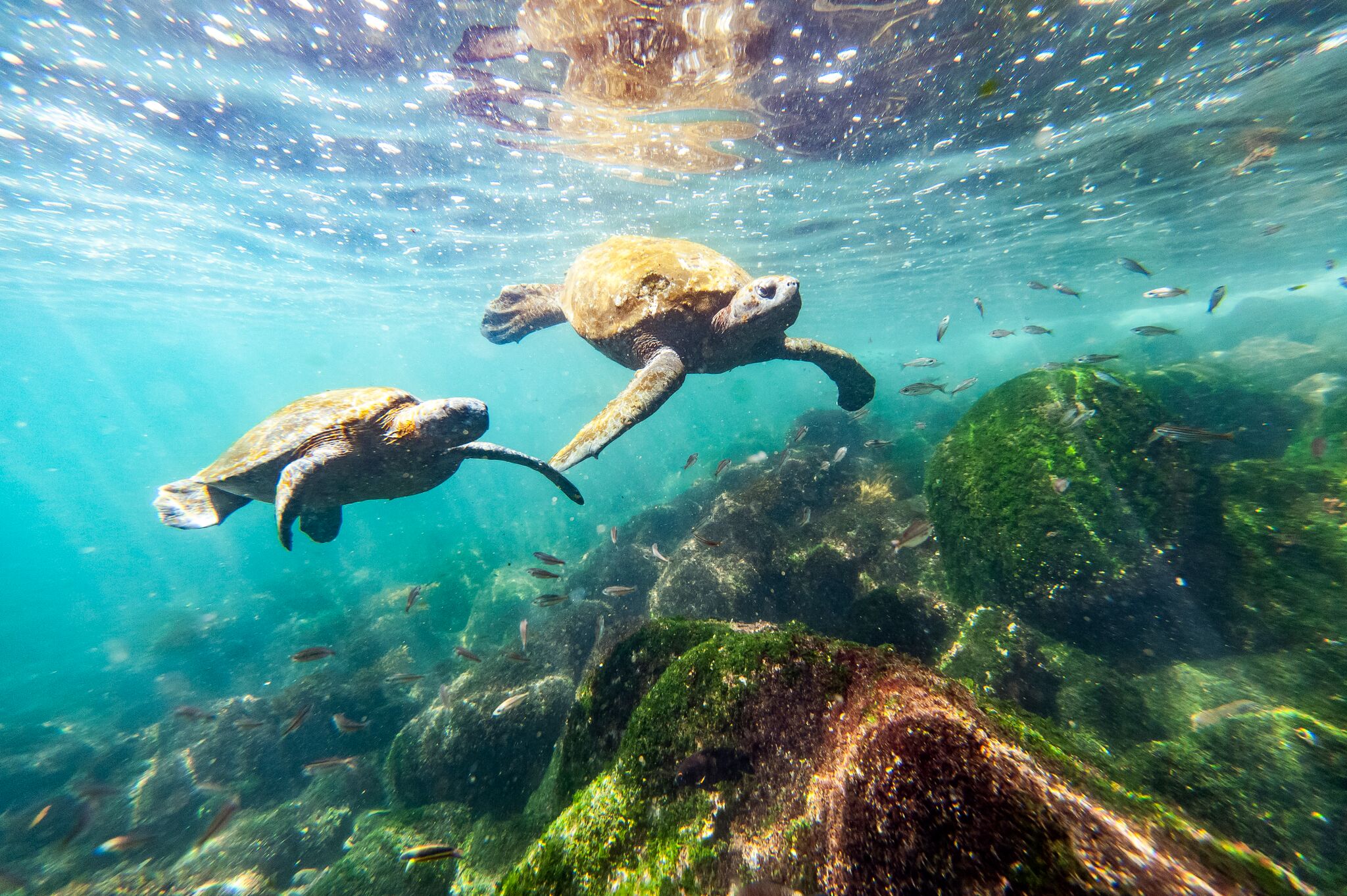
This extraordinary array of wildlife owes its part to several factors, including the remoteness of the islands – they are over 500 miles from the Ecuador mainland, and only a handful of them are inhabited – as well as a careful custodianship of the wildlife and landscape on behalf of the archipelago authorities and various conservation and research organizations based here, many of which we are proud to support.
What’s more, the Galapagos Marine Reserve, established in 1998, was recently expanded to provide even more protection to the marine creatures that inhabit the waters around the islands and travel between the Galapagos and Cocos Island in Costa Rica.
Several large ocean currents converge at the archipelago, creating a unique range of terrestrial and marine habitats, home to an astonishing selection of wildlife, many of which are endemic to the islands.
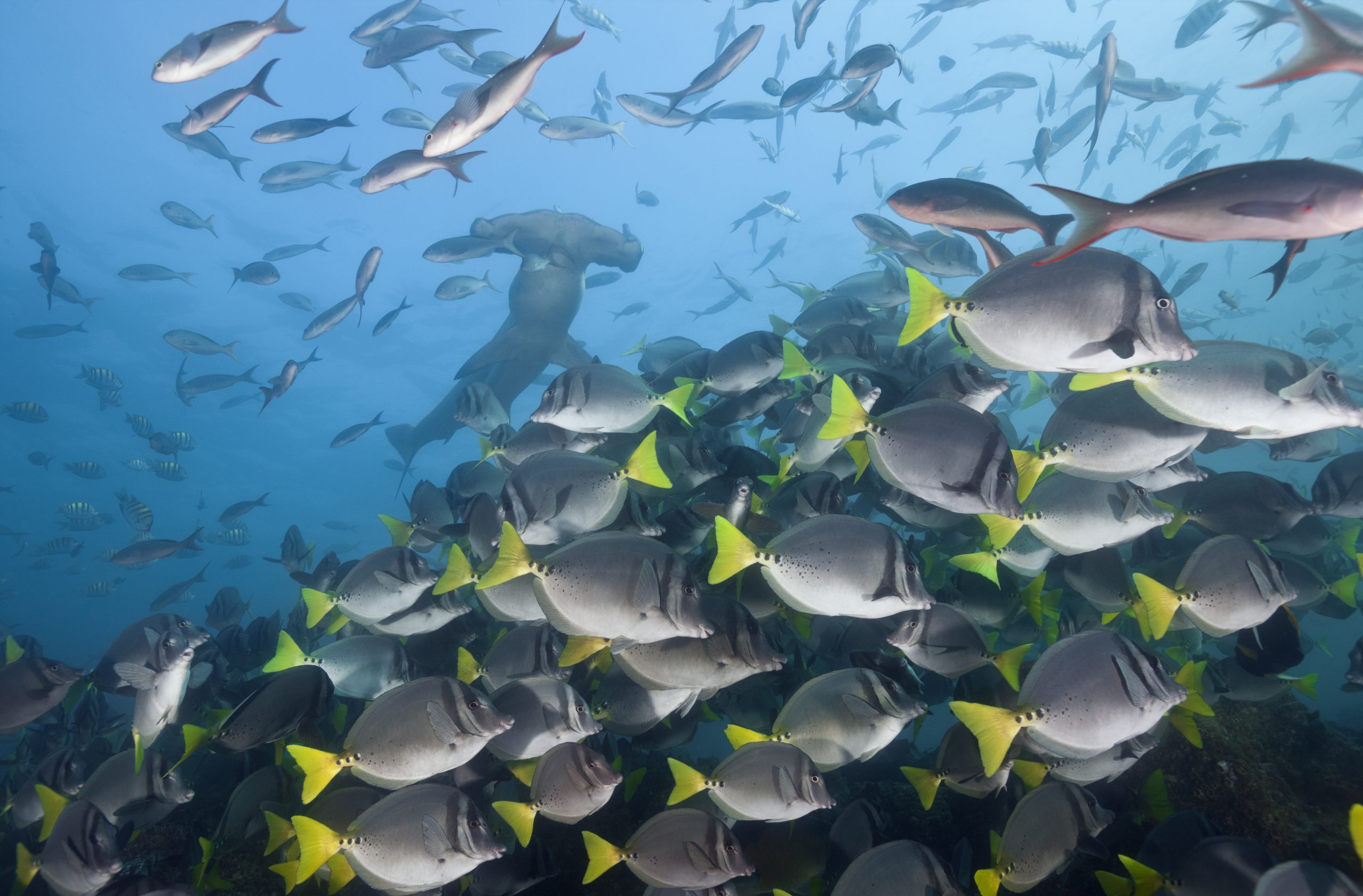
And in a fluke of geological coincidence, an area of the ocean off the west coast of the Galapagos seems to be bucking the climate change trend and supporting marine life in a way that isn’t common at these warm latitudes. In the words of marine ecologist Judith Denkinger from the Universidad San Francisco de Quito in Ecuador, these cold and nutrient-rich currents “sustain populations of penguins, marine iguanas, sea lions, fur seals and cetaceans that would not be able to stay on the equator year round”, with hope that these cool upswelling currents may help to stave off the worst impacts of climate change and ocean warming in the coming decades.
As a result of the above, the wildlife around the islands is truly remarkable, and is of course one of the main draws for visitors the world over – any passengers on our luxury expedition yachts are guaranteed to see huge numbers of creatures on either of our two itineraries (Itinerary A – Beaches and Bays, or Itinerary B – Volcanic Wonders).
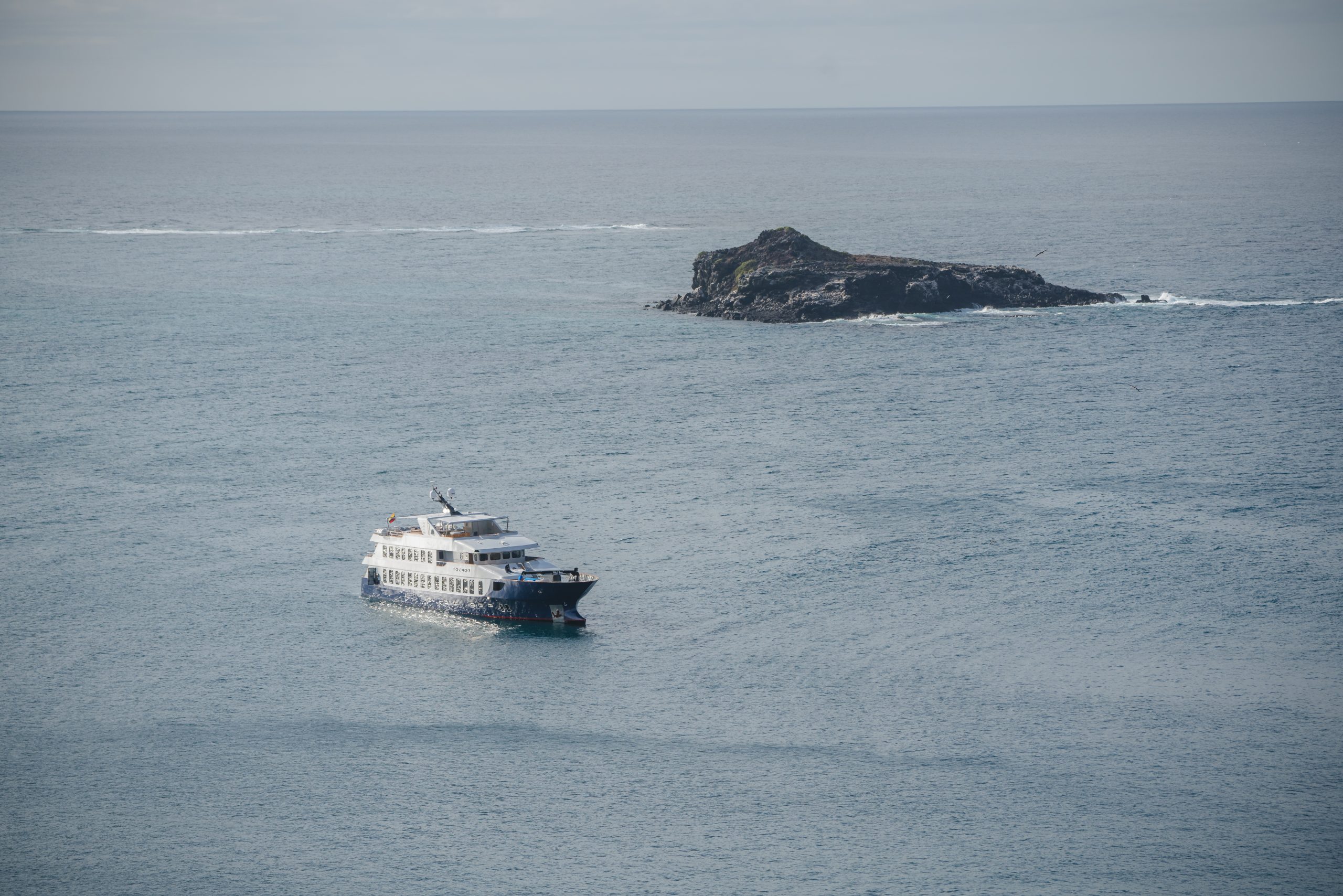
For the benefit of anyone planning a trip, or counting down the days before their departure, read on for a run down of some of the favorites you might spot on Itinerary A. It is worth noting that with the exception of a couple of specific animals, passengers are likely to see everything on either itinerary given the abundance of wildlife across the islands.
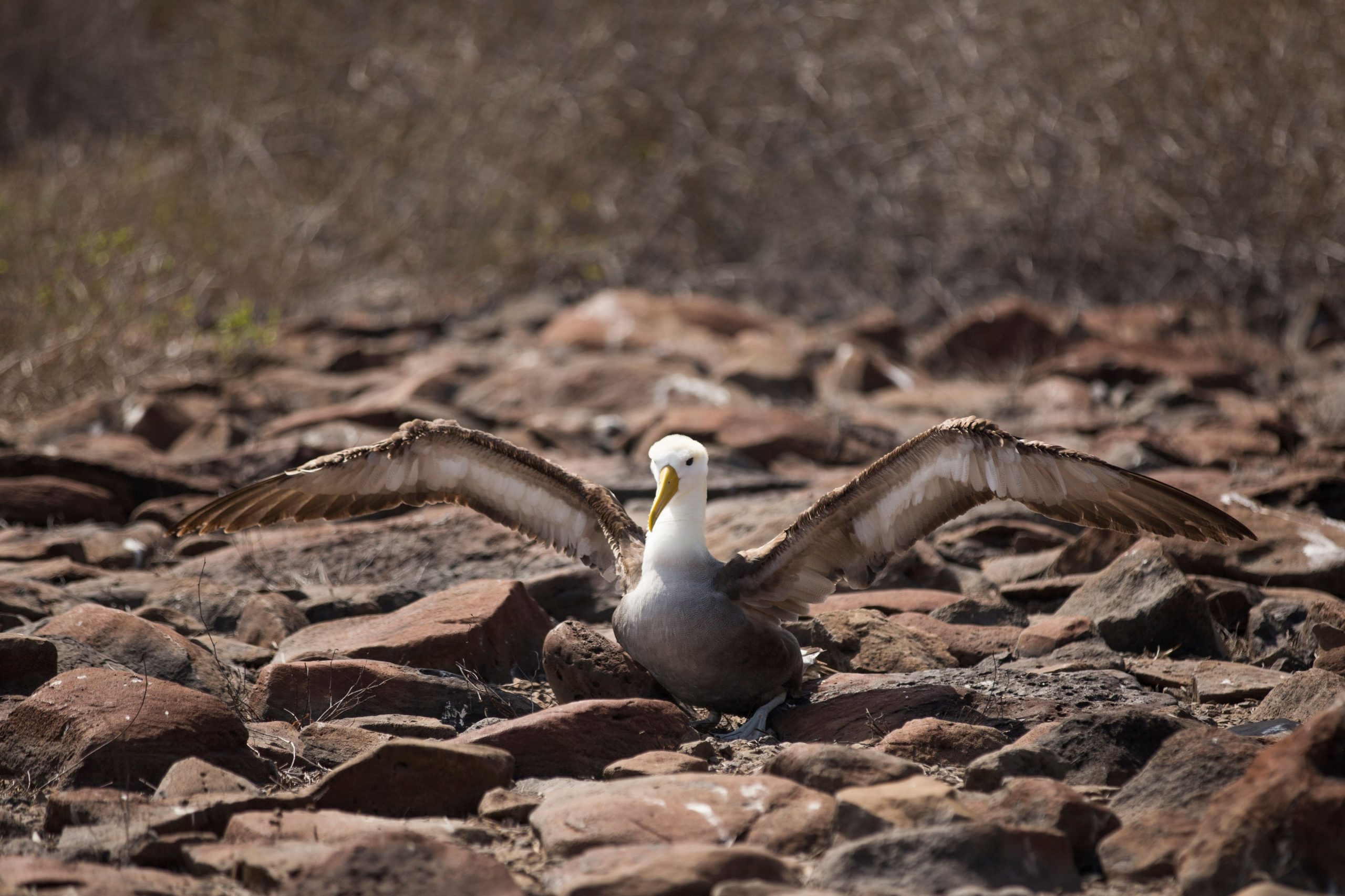
Waved Albatross
The waved albatross is a rare highlight for visitors to the archipelago. It is considered to be critically endangered and found only at Punta Suarez on Española between the months of April and December, so can be spotted on Itinerary A, but not B – take note if spotting these huge birds is a particular priority! With a wingspan measuring up to two and a half meters, the waved albatross is the largest bird in the Galapagos. With a creamy coloured head, brown body, a long bill and blue feet, these birds engage in elaborate courtship rituals before remaining monogamous for life.
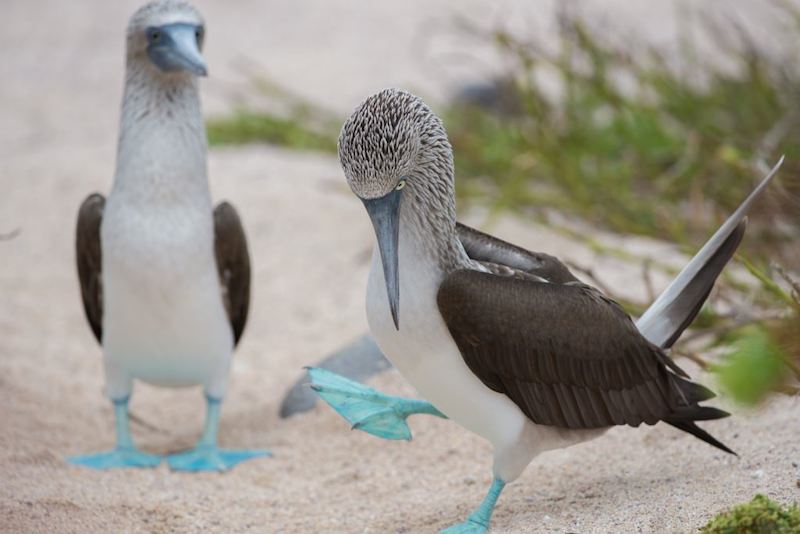
Blue footed booby
The ever-popular blue footed booby is one of three booby species found in the Galapagos. These large birds, with brightly coloured feet, are swift and graceful in the air, though slightly less so on the ground. They can often be spotted dive bombing into the water in pursuit of anchovies and sardines. North Seymour is one of the Galapagos’ best seabird breeding grounds, although they are a common site across the islands of the Galapagos. Keep your eyes peeled for the colony of boobies on Genovesa Island and Punta Pitt on San Cristobal Island. Their mating season usually runs from June to August, which can be the best time to see their celebrated, if somewhat comical, mating rituals, with close up encounters on the trails a regular occurrence.
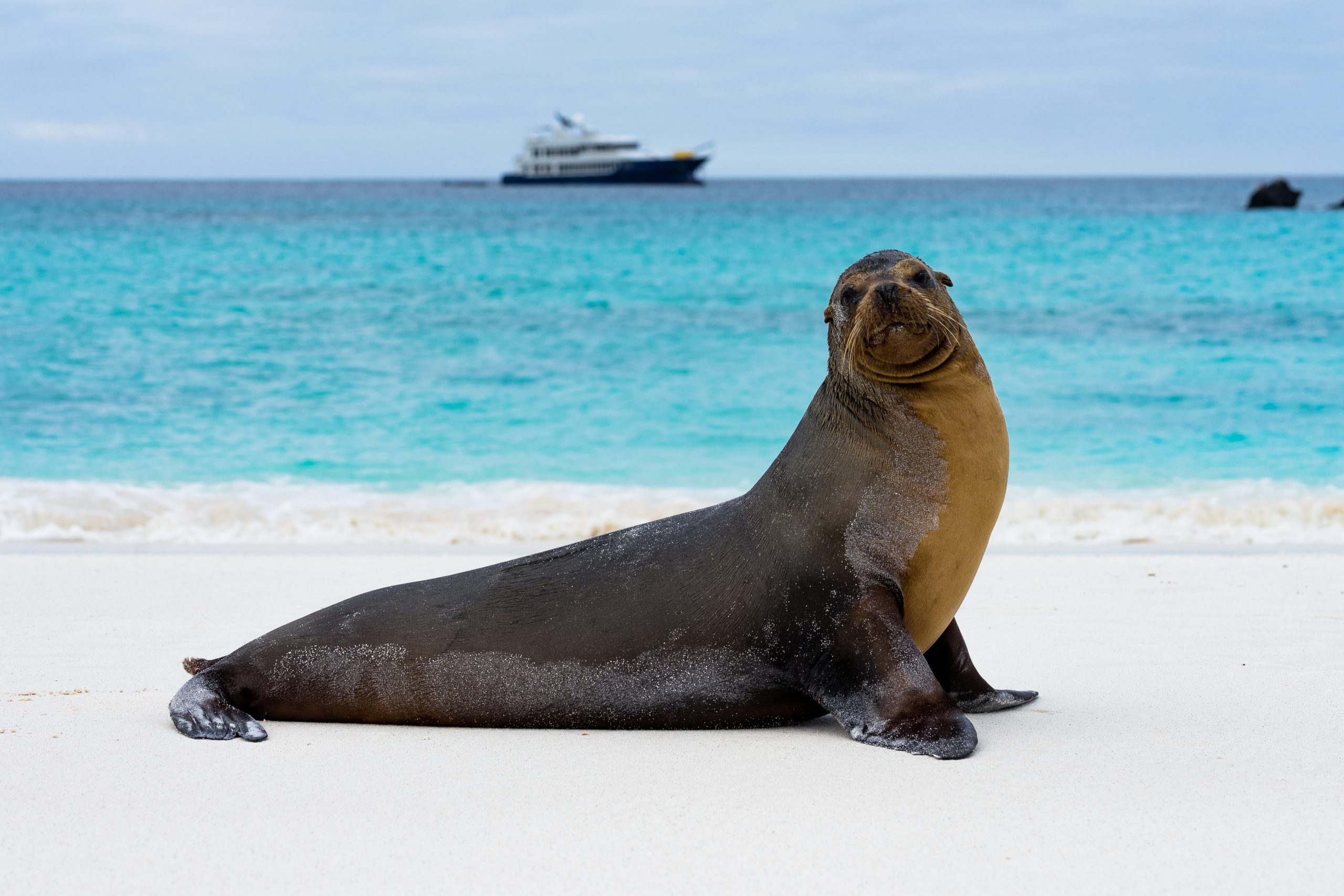
Sea Lions
Ubiquitous on all beaches in the Galapagos and a guaranteed sighting on both itineraries, and in fact almost every excursion available, sociable sea lions are inquisitive by nature and enjoy basking in the sun and playing on the white sandy beaches of the Southern islands. With brown/grey fur and a streamlined shape, sea lions are adept hunters and incredibly agile swimmers – they love to accompany passengers on snorkelling trips, showing off their underwater somersaults whilst hunting for fish.
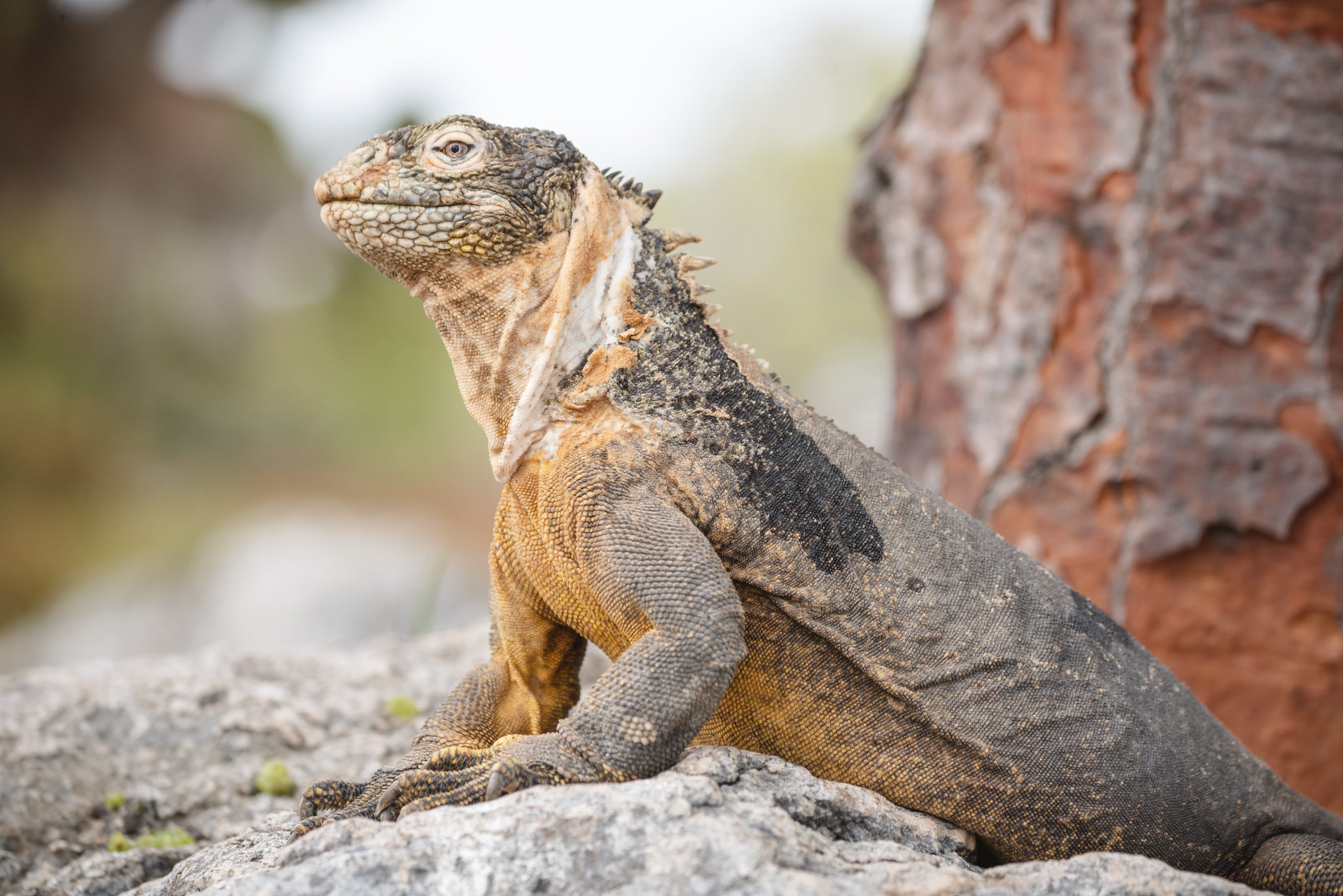
Land iguana
Thanks to concerted conservation efforts following a rapid decline in land iguana numbers since the 1970s, the Galapagos land iguana population has stabilized and is growing. Another common resident of the islands, the land iguana is often spotted on South Plaza. Yellow with white, black and brown blotches, these cold-blooded reptiles are primarily herbivores that enjoy a mutually beneficial relationship with finches.
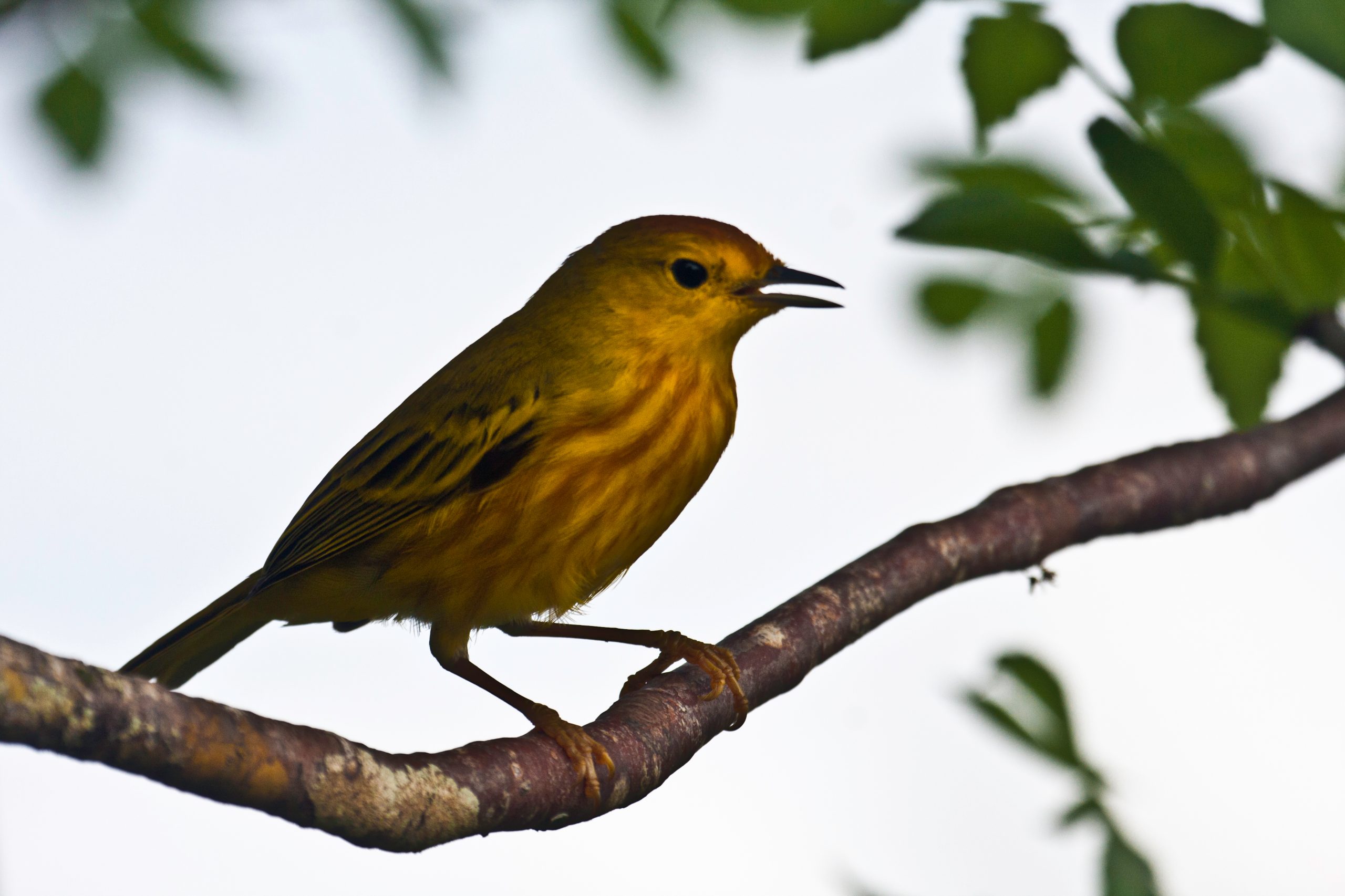
Named after Charles Darwin, who famously used them to help develop his theories of evolution, these 13 species of small land birds are endemic to the Galapagos. They are similar in size, shape and colour but experts can tell them apart by their beak size and shape, habitat and diet. Sadly many of them are endangered – largely as a result of invasive species and parasites – but experts at the Charles Darwin Foundation are doing their best to protect them. Keep your eyes peeled and you may just spot these little birds flittering amongst the trees.
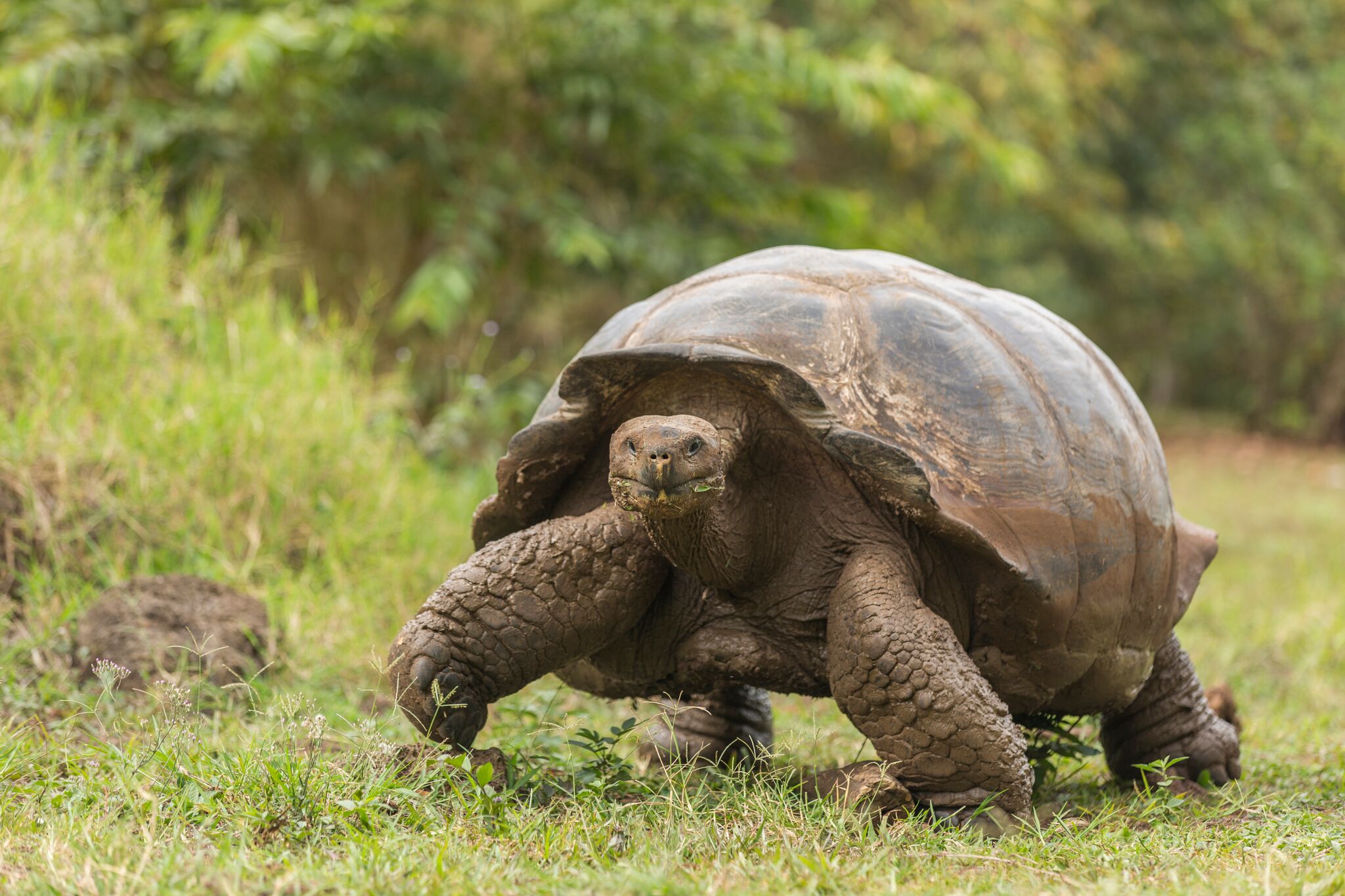
Giant tortoise
The Galapagos giant tortoise arrived in the islands from mainland South America 2-3 million years ago and is one of the most iconic residents of the Galapagos. Measuring up to 1.8 meters in length and weighing up to 400kg, the giant tortoise has a lifespan of up to 100 years and can grow to huge sizes. Twelve living species are thought to remain across ten islands in Galapagos, with these gentle creatures spending most of their lives resting or lumbering slowly through the undergrowth; they can survive for up to a year without food or water. Both itineraries visit a private tortoise ranch in the hills of inland Santa Cruz island, where tortoises roam free and wallow in shallow pools beneath the trees.
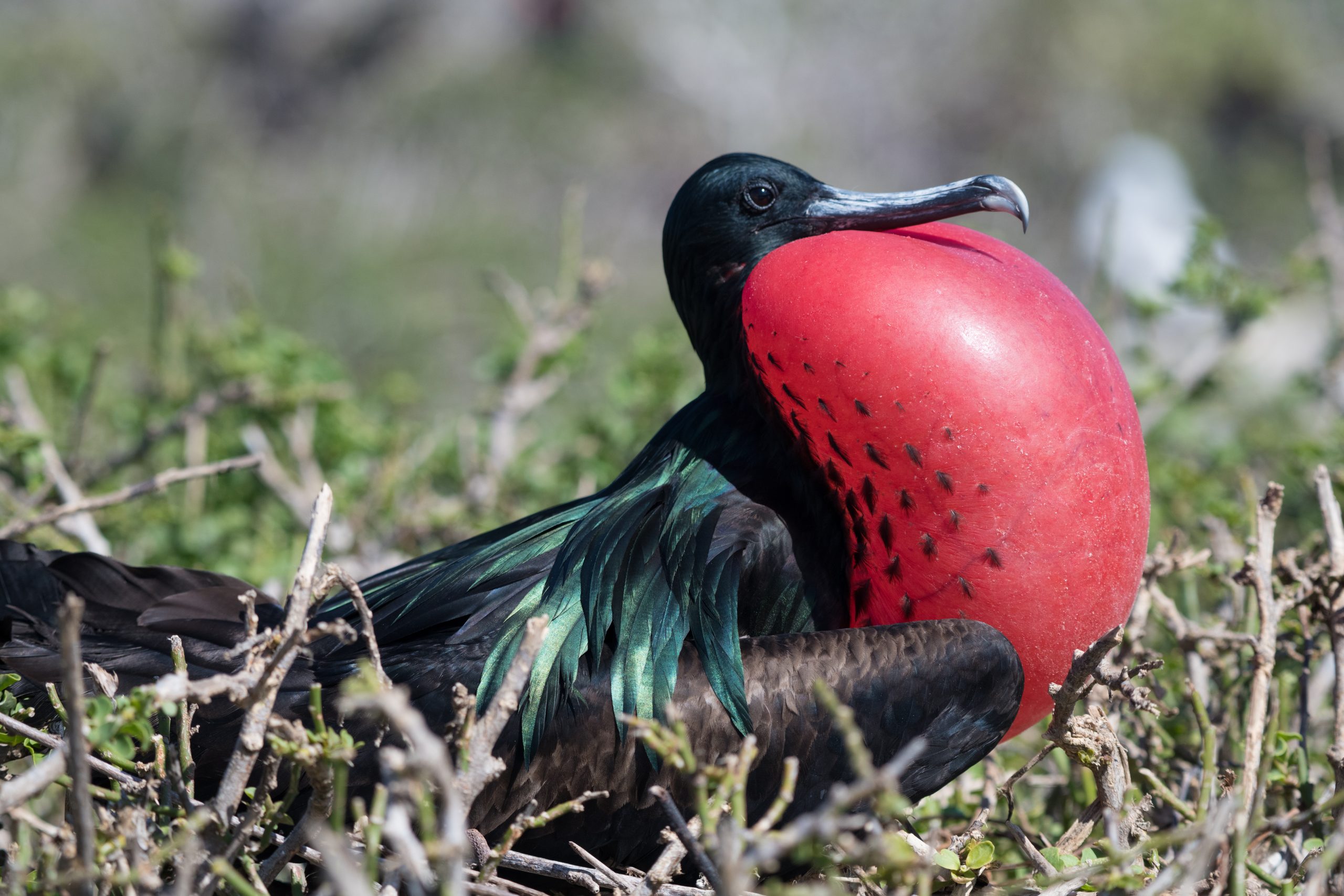
Frigate bird
Two of the five species of frigate bird are found on North Seymour in the Galapagos – the great and the magnificent; the latter is believed to be endemic to the archipelago. They hunt fish, crabs, squid and jellyfish by skimming the surface of the sea and have no qualms about stealing prey from the mouths of other birds. The magnificent frigate birds are black with distinctive red throat pouches which they inflate during the mating season.
The array of wildlife that inhabit the islands is truly extraordinary, and a full list would be endless. So if you would like to book your own trip to see for yourself, get in touch with the team and we would be delighted to help!




